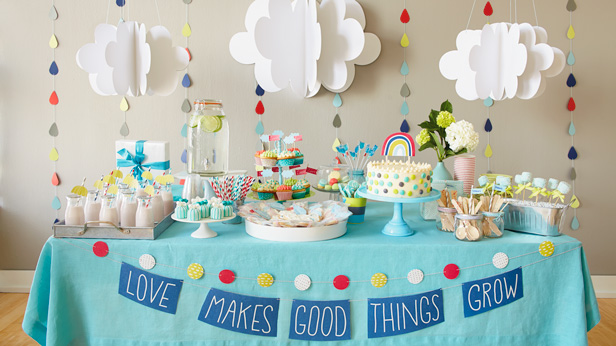7 Keys to Parenting the Danish Way
As new parents, it often feels like we’re always living in the moment, whether we’re trying to figure out how to get through the long nights with a new baby, master the art of the swaddle to soothe a fussy baby or keep breastfeeding even while traveling. But that time goes by fast, and pretty soon your newborn will turn into a toddler (if you can believe it!). If you think that people in Denmark, consistently voted one of the happiest countries in the world, are onto something, take a closer look at how Danish parents raise their kids. Jessica Joelle Alexander, an American mom married to a Dane, and Iben Dissing Sandahl, a Danish psychotherapist, teamed up to help American families learn more from Danish parents in their book The Danish Way of Parenting. Scroll on for the seven Danish parenting tips they shared with us.
Tips for Parenting in a Danish Style
1. Let your child play. One of the main things that Danish parents do is let their children play freely. Instead of parent-directed activities, let them enjoy playtime on their own. “Try to get them outside into nature and explore with a group of kids of different ages. Child-led play builds self-esteem, plus they learn so much from other kids too,” says Jessica. Iben suggests taking your little ones to the beach and “letting your children explore to see what comes naturally.”
2. Be honest with your children. As adults, it can be easy to sugarcoat things for our kids. “Being honest with children is about telling them what you really think — good or bad,” says Jessica. For example, if your kid presents you with a painting, instead of overpraising by saying, “You’re such an amazing artist,” promote further discussion by asking why they chose those particular colors.
Iben mentions how we often have difficulty dealing with our child when they’re angry, aggressive or anxious, but helping them learn about these emotions (like discussing the movie Inside Out) can be powerful. “Read good children’s books together. Good books and honest conversations give children more words to discuss their lives,” says Iben.
3. Promote togetherness. Danes regularly practice “hygge,” a time of coziness with friends and family. It’s a daily part of life in Denmark. For parents, this involves time together with their children that encourages the whole family working together, like a scavenger hunt or organizing a tournament. It can also be something as simple as playing a game together. For fun ideas to craft together with your kiddos, here are some easy DIY projects.
4. Reframe negative situations. Reframing is an invaluable skill to teach your children. When your child has a complaint, discuss the issue with them. “It’s not about seeing life through rose-colored glasses,” says Jessica. “It’s about listening for the positive details in your child’s stories and helping them focus on those details.” If your child whines that they hate school, bring up the art class that they loved. Or if they think they’re awful at soccer, talk about a week that they felt they played well. “Help your child focus on what they can do, rather than what they can’t,” says Jessica.
5. Do not give ultimatums. While no ultimatums might seem like parenting without setting boundaries, both Jessica and Iben explain that this type of parenting is more about setting clear rules for children in a respectful way. Instead of an authoritarian parenting style (“You better do that right now!”), the Danish approach sidesteps power struggles and works toward maintaining respect. “Danish parents explain the rules and give their children a lot of trust,” says Jessica.
Iben adds that if you, as the parent, feel like you’re losing control of a situation, give yourself a time out. “If you are calm, they will be calm,” Iben says. “You must guide your child through tantrums without having a tantrum yourself, as the adult.” If your little one is throwing a fit, saying, “I can see that you’re very upset. When you feel calm, it’s much easier to talk. Come to Mommy when you’re ready,” allows them to fully exercise their emotions, but lets them cool down and engage with you when they’ve calmed down.
6. Practice empathy. We all want to raise children who show compassion for themselves and for others. In Danish parenting, this is all about teaching kids to respect and try to really understand people. “A good way of practicing empathy is to talk about facial expressions. Show them different images of someone who is sad, angry, happy, nervous and shy, and ask your child why they think the person is feeling that way,” says Iben.
7. Let them work it out. Often, parents try to step in when their kid is playing with another kid on the playground who they might not like, but Jessica suggests letting your child work it out. “When you feel yourself ready to step in, take a breath and step back. Children learn negotiation skills and how to better handle dealing with others,” says Jessica.
(Photos via Getty) by Jennifer Chen source:brit.co





